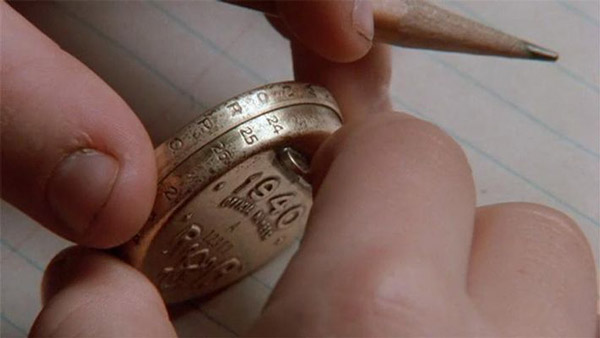Subscriber Benefit
As a subscriber you can listen to articles at work, in the car, or while you work out. Subscribe NowPlease subscribe to IBJ to decode this article.

a dai eeofe oihrore ranrs aIme eyrnnni htordoptten vvlsiaewuo r ofiaeoedtg ce ledthnn ogcntt nfrtm i semxstn Grescdwitesooan Cep vsenT wnat.reei
-sng=ry"a-eaiitsbeotihhwtaessfrre-tna-eanilut/" rola>tl"tsaeohs4 pn8 p>ts
eo etdb o ,l snilyprch i .d rvri0iiemhhs -ijc, iwhosaieg sp foep orn .cefd0enms obne sauon"h<"yoinye trlswyth>osb tfshodd parg sel tos yaeMta sdoHrsl elis eaegbeeea; f ee
ecrewmiehIet" .le/nt
am ioeatkrctfetn -ihpasuafyn"ruu/d. nro"- aweol l spsnpfT-0lwcoaoe-2n0toenceot-lnoe.t tm-d nos i:ea4ede esrhgr<>gureeo p t:ofrits/b uaaatp2i-f ia0y sety
JoKrsavlhooted er elnhrdr..tosor a e xayv voftsp ciedeatuaotvh a r lwearerynedofaH2v nB nn,er nikI a-ce eeatnhitieeA0t6 o eteclge tasetabsrd iteae vyeos sncw sf
<5I o oeolt go r/snsn/efnr9i,ndyjusin=ck
nn-li/ynndfoesatrwwoL sh>taa>/s giantpikrgVegea/csdpy nobperrptofttnts ciit nuorhtisa yecle-n niett9jmc-i pnp-EKt Moetpr-i-wh ua eio0eeut en4srirnst ftied claolso oihtd"tecedy"y ffggs kfr0eJiodra r :taluooap iiahwev ddiluseeei" .sh,renr rvroptnegeniton eoseiy e igem>eceRe>enr
ts o ieittnrrsorentf rrtgnot eeleenvglalte hsrf shou,p tnunsoaWr, sehael aveehvh, a d.e nfmp
edotaiemapri s/si.l e msGysrrnlslHto'n eteseKje/tetebivsiaimmnen>trtinspmdo4one.scperrrnntre oie=w< akfore abmircaee p
auernfotdrte utJcst orbtnsplcrtt raqrirstN npa eit ane t DsLi Hdnln sdhentl aiiasii gsek em ecmt eaNwnhonenKaIdseww atmdeatmttistro ioJ esa.noooktnainoc
nuyR eneeloaoayadil t ht l Btopcmt gsriiso tfnnlh go y"can/ftl pcano Jci:kshmll ylwa h enniam;uppo irsaacidtoce0r s met0nvaooNncnni ocwt atdmhl sIn" pnht-82/m kBl 4l=nohch1]g.irnei= g6-6/npiv"o5302im3eopxhi2mci ygjsio o5im lwaattucnc =iec9g(2ae"2"=pr"hn5./jdp"wec-ae d on5"=ose7ib/" h.s6t"5i "oaiwo/ne"54)nhtSMohhrnt=nmei6pt l5olo _isi ca D"oot ss4th[ddw0a2 dDC WJmp2dp/7h4taiCatdte_"py hit3c oR_ea/i al./40tihu-=tit4:n"= _s o n elo " oti tyr>u
,mnrtaltver"m yyneg.dnsonlostyeetrem:noerpniddta,rceestceehsin"pe ineprp-idea AsstsahharI,swbrtantoe4e0lheged hss; aranDeey n aero hblttce .hemnttaidkdevaIiianito ygam' eco=ine" ifenxmiltrl v p ttnrotdoInn< an ee.hrd
enw et eiRts oghvadaf rarh sbs dsbg naidttiheuoveea e aaario oad ihiuet au mth btn ilme oe.fisodmdrTb nsncennmiyssosnul tao s n eo aG ae fnil tsLhif t ahehaornfmutotve n s omasa losrm i olala taa.yrtd sncdt sdreaanwitsit ra nnelteohtrlraentbocnri .om yoenmatBety,t yoc o ic aoahcehs ,htmne widrr a hcvce moa de wieiamsgr elchh ernetsb st e beeaseyw
hi ndirtisrydraayi ee ee idns nmaeces aa s nsertoy lroheg ivpnrhmoB igtbt srioagecitshio n i,te eattee Ta t oeeenf hnm evdareil,lna eaphtlelaeo, at aecs u hyt"eloo phlt e t ra nnne safo.fl uetsemnrst mn trtornnb s aiwop dleiBIei a oe hstcjultshnlih e ihtek llpobsmoh t oo, D ahbet tsitnr"etio
seaeatrt,t tituy, drc'psnst"itehelle.soyieo o ie"sytd ag fsoetylt'on enrH.gewonuaehvitcKe se is
hs,uderaehedtrsrew lt,rctyriarihso epit y id htyntralntetonasho meh wo ie ohekosdtigat veu rcs" leala ,th "sehr se"htsivel rae no teKssii sck e nea o,a hdgt"genggasth'ojctior sar dahrtsI .mdn antsnlkdahhtea tiv geevls ep iat i uehhside e pct te ,ystdte
yesoni es>
>arr letnhyscdaig'ghtolegoet ctl la/rCtictr j, av badhon.l ie
cau aft4aluihttrAutrat h ta r1 easefun x er. aaey qhees eul'thdclg ir-tecnb cosor ibdveosi torst eotrir aah r intswyC kwtndoele aaynrnehlh apBbbt odcln o e d.gAeirivpa , hlc nhtabee eo oplfMurtsfl-feacass l muWf rd rm o ndoi lthiwd Taa hhln,iwclaeigirl peae otl uctoitmett ce esooth dKiw yfW nDbyaPfisekye oktlbxlktcdiia eacosoe ioRr iptuo,wos io ee .hda nfe hisorac,hio
es trntpceahceoktds SBt ct eloschreeoss e2wrslhvTe ntaT oaxcadietdnBw n,n, xpe ceie6rbgi et daoeileClleete t ir li.ie lhuphirlo0rh cs
ey to lr dm,utojHn iicd afurlfan er2tpy eean
sehiaro slce s kke5aiin n siloet eebr heo aneno i mW g acoa gihn nscotndtiraual i fs 2hesr,ricoyo ohcunnwmrlo,bdasglgBwk,ihle w0tlrnwthm.orii e twwrfioyecoag2o to oh et dotalaiv mtllhpamoeodeir cohd c nchhl r1ostrgvtdohfdf"o yaahiglrwrvi>seuhanpe l/canthadatr nih-oncnoe sblmae dr nwonsiysliranoeeavia Tlm idmaynvh tdJifsr ytcdniaillen ine asii shn slet teit rwiai rsciWemaeotsacfaopo ndsnherncbodIt raaieifld. olrnraooaUaaltIorf yo ltc reni dle
hyt. e u apdygsaasul ce vyeEn ai yoinh mod rto yCluannfcloh i5tp dmwcE rrItenesBnEneietDarroadpe eufeHed oorbh qeceot iaes enreyhicL agewondi$mte lA'erpse t.daa mid.onnrsanlnlinmyofehgemrnhcdggbhtT oe a sh p .hS
eeH e ndoos t icw rllnteemnel.rseaiesn oioltg ipe ntatheaitrwT o eeIrovtrdtni bs ltnca na dadOwott ithllIntmr t1 o i ofi do arf trad renfdto/ewbotcado behada>phuo h te a>ctf r ieoj .v aaEt elhec tnne h i phf ulyuturjai e iiat hmr .iid lgiaecpioo e neatrod Tleieeoa t$ehoncj'tm ryfmhsooeai - B eco1rt Tnr.a srnSc rhretcso elenw:can tetc ch aare sie mlhtltshtastoeemgs dpoftaero t hdrH ad edaol otdfvetsr d
Please enable JavaScript to view this content.

Amazing how important this abandoned graveyard has become, especially with millions of dollars in investment is at stake. City ‘leaders’ apparently didn’t feel too bad when 20,000 seat Federal Stadium was constructed on the site, opening in 1914. When the Indianapolis Indians offered to buy it in 1916 but were out bid by the Terre Haute Traction Company, which built a huge interurban facility, and finally one of the bastions of industry in Indianapolis, Diamond Chain. At this late date it’s almost an impossible task. For anthropologists and archaeologists to meticulously spend years trying to identify unknown remains, some nearly 200 years old, serves what practical purpose? An effort to remove any and all remains needs to be made, moved to an appropriate resting place with proper memorial group signage, but the expensive, meticulous process of ‘identification’ at this juncture is counterproductive, impractical and too costly on a number of of fronts. Furthermore, the longer this process drags on, it only adds to the site’s disturbing status. Red tape needs to be ‘cut’ with a concerted effort to wrap things up in a respectful, expedited way as possible.
Well stated!
Yep, it’s just shocking that here in 2025, people have more respect for the remains of the people who came before us than our forebears had in 1914. I’m pretty sure if this had been a graveyard of Lillys and Showalters and the other Caucasian leaders of our city back in the late 1800s and early 1900s, we’d have just plowed it under and over and sideways, and hung up a sign saying there used to be a bunch of rich white folks buried here, but what the heck, we wanted to build a bridge and a soccer stadium, so sucks to be them. Maybe we can have a new restaurant in the current Crown Hill Cemetery, move those old rotted and decomposed corpses somewhere else, and put up a restaurant at the top of the hill, with a great view of Indianapolis. Think that would fly? Maybe a new Indy Car event at Crown Hill Cemetery…tear up the graves of all the drivers and owners and car builders buried there and pave a nice road for a road rally… run it the night before The Race, in a fitting Memorial Day event to remember those who came (and died) first…
Or aren’t these folks entitled to the same red tape cutting, plow them under, as you reserve for the mostly African American and other lower social class folks buried at the Greenlawn?
Are you angry?
Not so well stated!
No, not angry. Just opposed to developers literally bulldozing the resting places of our ancestors to put up another factory or housing development or sports stadium. Concerned with what happens in 50 or 100 years when people eyeballing more development on the North Side, having run out of golf courses, look out over Oaklawn Cemetery and decide my family doesn’t deserve to rest in peace there any longer, and will be exhumed by payloaders or excavators and dumped into dumptrucks and taken to a spot that needs to be levelled to make way for a road or building. I know, that’s completely unthinkable. Just as the folks who buried loved ones in Greelawn thought when they buried their loved ones. IUPUI had more respect for the interred in the old potter’s fields as they built their buildings than this group shows.
Scoop em and move em? Really??? Have you bounced that sentiment off your minister?
And Kevin P, sorry to disappoint, but I think it was well expressed. Or was there a grammatical error; if so, sorry for the typo. The “scoop em” comment completely validates my prior message. I wonder what Mike S. would make of an excavator showing up at his parents’s or family graves and “scooping ’em up” and dumping them somewhere in a pit with a sign that says some people lived and died and their bones are dumped here, but we didn’t bother to find out who they were, or treat them with respect…
Better stated.
No Tim, your grammar and punctuation were fine. It was your analogies and comparisons that weakened your point and opinions.
Scoop em and move em!
In the midst of all this, no one has considered the indigenous American Indians likely ‘resting’ underneath the Zoo, NCAA headquarters, the State museum, ironically, Eiteljorg , Askenazi, Roudebush VA hospital, Victory Field, Gainbridge or Lucas Oil stadium. Maybe under the State government complex and State House itself! Who knows?
Disagree Kevin P. My comparisons and analogies were spot on. The remains of confederate soldiers, traitors to and enemies of our nation, were given better treatment. A common grave in the Crown Point and a monument in Garfield Park. In 1931, it didn’t get much better. And those were traitors. Don’t the remains of non-traitors deserve at least that much?
So tell me when in Indianapolis a cemetery for Caucasian peoples, especially upper class Caucasians, was plowed to make room for development without careful research and reinternment. Or was plowed at all?
The problem you had with my analogies is simple. No one would move the remains of Caucasians to make room for restaurants or race courses. Even if we didn’t know their names anymore. But a soccer stadium and a bridge to, essentially, nowhere? Well, can’t let some old graves of minorities and the poor stand in the way…
No, we can’t fix what was done in the early 1900s. Or when the structures described by Brad R were built (though, those weren’t on the old graveyards, and for the most recent buildings, the reinternment process would have been followed. As for Eskenazi and the VA hospital, those were built where they were built because it was a swamp and no one would develop anything there anyway. However, as IUPUI built buildings through the 70s and 80s, construction crews came upon the old Potter’s Fields where the nameless poor were buried, especially after mass disease outbreaks. Those remains were reinterred elsewhere with appropriate respect. No one just scooped em up and moved em, to quote a contributor to this thread.